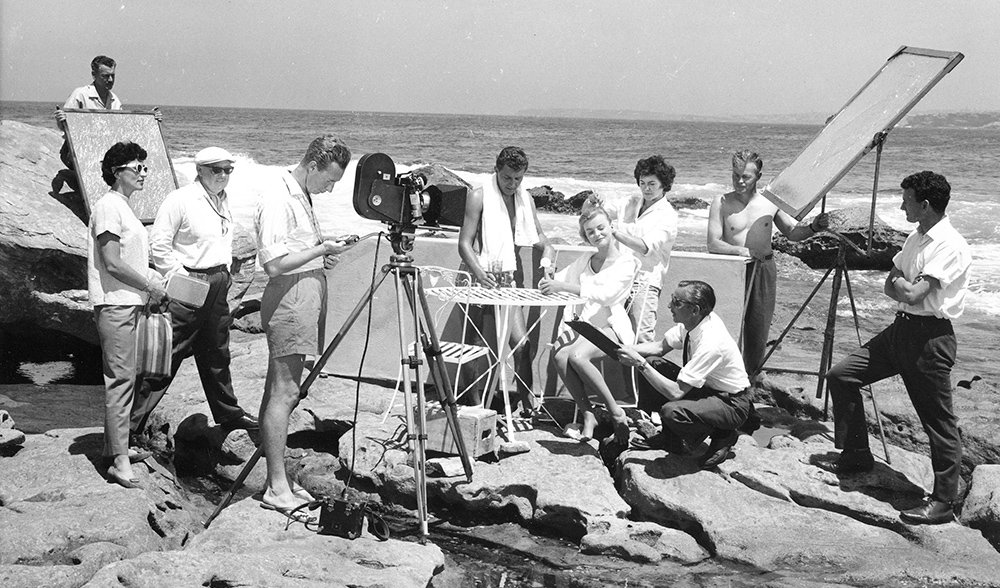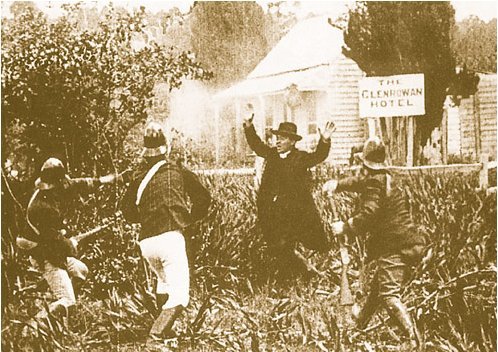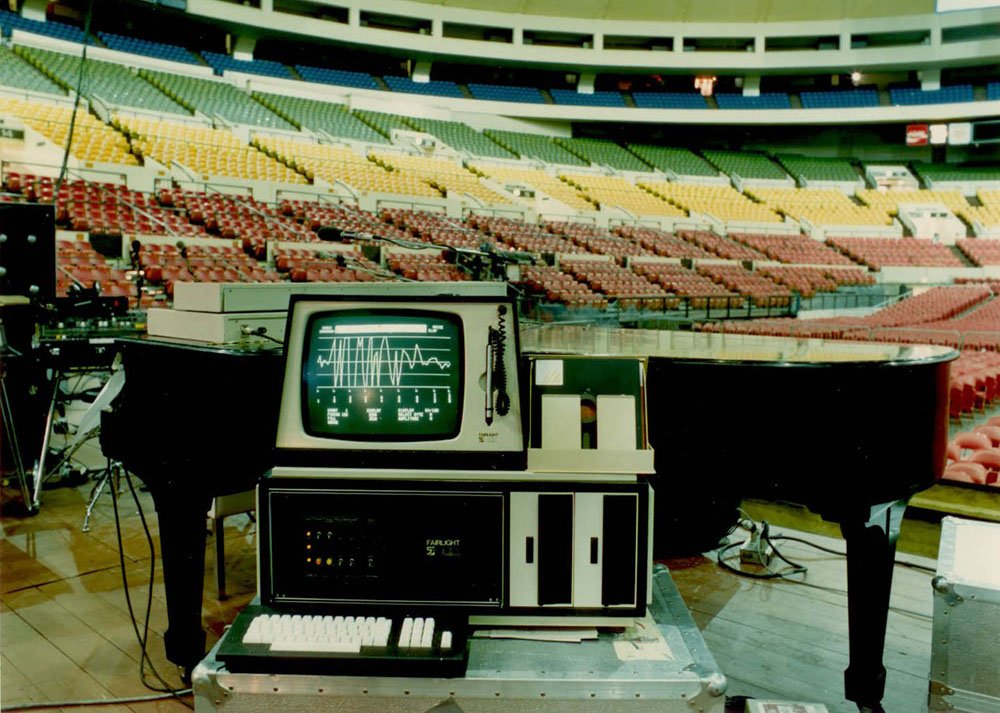Stars You Didnt Know Were Australians
10 arts inventions you didn't know were Australian
Hither are ten piffling-known Aussie inventions that fabricated a big difference to the arts industries.
Apr fourteen, 2016 • Reading Fourth dimension: 5 Minutes • Print this page

Glamour on the beach (1965): Sydneysider Eric Miller's tripod invention in use during filming. The cinematographer pictured is Australian John Leake. Image credit: Miller archives
1. Globe's earliest boob tube
In the 1880s, Ballarat inventor Henry Sutton developed a device that was to pave the way for the invention of the television. Sutton's early version, which he dubbed the 'telephane', was a long, tube-shaped appliance designed to transmit images over telegraph and telephone wires. The Regime Astronomer of Victoria confirmed that he witnessed the telephane, and it worked well. Sutton's paper on the telephane was published widely in 1887 and again in 1910, but unfortunately, Sutton did non patent the device. The commencement Goggle box, invented in the 1920's by Scotsman, John Logie Bard, used Sutton's principles of synchronised transmission and reception.

(Image courtesy Lorayne Branch)
two. Earth'southward outset total-length feature film
If e'er an invention changed the world, it was the feature film. The Story of the Kelly Gang was an fourscore-minute full-length characteristic film, shot in Victoria in 1906, at a fourth dimension when moving pictures were ten minutes long at most. Melbourne'southward John and Nevin Tait, Millard Johnson and William Gibson wrote, produced and directed the breakthrough film. One of the Kelly gang's original coats and helmet is said to have been borrowed from the Victorian Museum and used in the film. The motion picture toured Australia, New Zealand, Ireland and Britain, grossing over £25,000. By 1911, Australia had produced 16 more feature films.

Screen take hold of from the 1906 film, The Story of the Kelly Gang. (Epitome: Wikimedia)
three. The world's beginning automatic record changer
Tasmanian engineer, Eric Waterworth, was just 20 when he invented the world'southward first automatic record changer. Launched in 1925, the Electric Tape Changing Salonola had a stepped eye spindle, allowing 6 vinyl records to be played in sequence. When the Salonola'southward manufacturer in Australia went into liquidation, Waterworth sold the patent to a London manufacturer, freeing himself to build a career on freelance pattern piece of work. Although the patent lapsed and the Salonola never went into production, the stepped middle spindle was used in the record changers that were enormously pop in later on years.
4. An invention that transformed cinematography
Much of the creativity in movie camera work owes a debt to an Australian invention. Prior to 1946, movie camera operators relied on complicated and expensive gear-driven equipment to make bones sideways pans or up and down tilts. Diagonal movements weren't even possible. Sydneysider Eric Miller spent six years developing a solution based on his patented "viscosity drag" principle. The fluid caput camera mount gave camera operators the freedom to make smoother, more than dynamic movements at lower operating costs. Miller fluid head mounts and tripods are still made in Australia and are sold globally as standard TV and pic camera equipment.
5. Early electronic musical instruments
Invention rarely happens in a flash of inspiration – the championship "inventor" often goes to the start person who patents and successfully markets an idea that others worked towards for decades. This is certainly the instance with electronic musical instruments – inventors around the globe tinkered with early versions long before the showtime synthesizer was invented. Australian composer and pianist Percy Grainger began experimenting with a range of eccentric "free music machines" as early on equally the 1920's. His "Kangaroo Pouch Free Music Automobile", built in 1952, stood ix feet tall and used four vacuum tube oscillators to create gliding, atonal sounds.
6. The breakthrough that launched a musical revolution
Before 2 Sydney high school students used off-the-shelf hardware to create the Fairlight CMI in 1975, electronic music was confined to instruments with basic processors that just generated artificial sounds. Kim Ryrie and Peter Vogel discovered that using the waveforms of naturally recorded sounds provided far superior results. The Fairlight – named after Sydney Harbour's fastest ferry at the time – was the first musical instrument that let users sample sounds from various sources, make quick changes to moving ridge patterns, place notes in up to eight channels at in one case, and move, transpose, or alter their tempo. The Fairlight won superstar fans such as Kate Bush, Peter Gabriel and Jean Michel Jarre.

(Image: Peter Vogel'south personal drove)
7. Software that took movie special furnishings to a new level
In 1991, the Australian visual furnishings studio, Animal Logic, released Eddie, a groundbreaking software package that enabled film-makers to create visual effects in the style of The Matrix – at 1/10th of the cost of rival products. Prior to the release of Eddie, animators needed a range of programs and computers to achieve these furnishings. Eddie was the first compositing software with an interface, and the first commercially available product that could perform morphing. Eddie was used past Animal Logic in the production of films such equally the Matrix and Baby, and exported to the international software market place.
8. Incredible stage effects at the push of push
Theatre is big business organisation – and calls for ever-increasing levels of production and inventiveness. In the early 1990s, Australian visitor Bytecraft Pty Ltd created State, the earth'southward most avant-garde computerised stage movement control system. Before Land, sequences such equally the crash of the half tonne chandelier in The Phantom of the Opera required hours of exhaustive preparation and rehearsal. State allowed controllers to execute complex sequences of stage and scenery move with the button of a button. The system took its name from the initial install into Melbourne's State Theatre, and has since been installed into prestigious theatres around the earth.
Video comparison of the chandelier crash scene in various productions of The Phantom of the Opera. (Source: Glass Prism/YouTube)
9. A4 DSP chip
A digital signal processing flake co-developed by the CSIRO Division of Radiophysics and Austek Microsystems in the 1980s caused a splash in the live and recorded sound industries in the 1990s. The technology formed the ground of 2 new organisations, Lake Technology Limited and Accusound Pty Ltd. Accusound became successful in the loudspeaker design industry, and Lake expanded rapidly, developing acoustic inquiry tools for Bose, the Huron Digital Audio Workstation, and the processor behind the widely used environs sound technology, Dolby Headphone.
10. The technology that remastered Hollywood's classic movies
In 1993, a squad of engineers from Kodak Eastman, Melbourne, invented a style for old-fashioned pic images to be digitally remastered and sent back to film with no loss of quality. The Cineon Digital Workstation was the quantum that allowed older movies to accept their scratches, faded colours and distorted audio tracks repaired and re-released in stunning "digitally remastered" formats. The Cineon file format is still in common utilise today, and when a subsequent product was nominated for an Sci-Tech University Award in 2005, these Australian engineers were formally recognised with an Academy Plaque as the creators of the innovative technology behind the product.
READ More than:
- Australian inventions that changed the world
- 10 Aussie inventions that make your life easier
- Top classic Aussie songs
Source: https://www.australiangeographic.com.au/topics/history-culture/2016/04/10-arts-inventions-you-didnt-know-were-australian/
0 Response to "Stars You Didnt Know Were Australians"
Post a Comment